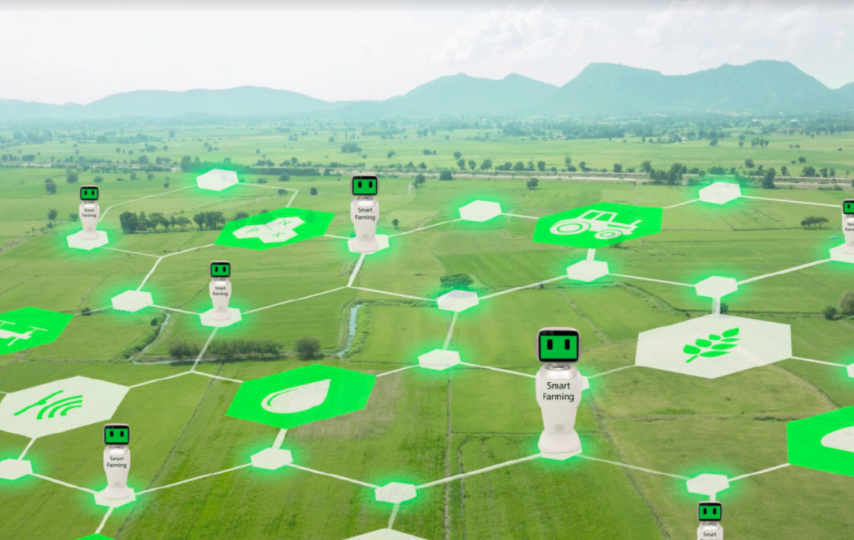There was a period when agriculture and technology were located at opposite ends of the value chain. No longer! We currently have a lot of proof to support the use of mobile applications in agriculture, as well as numerous arguments to support their unavoidable dependence on farming operations. Smart agriculture is anticipated to increase from $12.4 billion in 2020 to $34.1 billion by 2026, according to Statista.
If they don’t use cutting-edge technology in agriculture, like mobile applications, 21st-century farmers are less likely to be seen as progressive. To engage directly with consumers or the B2B market, many farmers now prefer to create organic food e-commerce platforms (e-commerce mobile apps).
The next iteration of farming will certainly astound us, from automation and robotics to connected livestock. Today, the Internet of Things (IoT) is a key factor in the increased, more affordable agricultural output. This has opened the door wide for engineers to develop intelligent Internet of Things-based solutions that guarantee to increase agricultural output in a way that is both efficient and cost-effective.
According to a research company, 10 to 15% of farmers use IoT solutions for agriculture, and they spend a significant sum of money on the adoption of new technologies. Agriculture is predicted to experience a 20% compound annual growth rate in the use of smart solutions driven by IoT.
IoT-Enabled Livestock or Cattle Management: What Is It?
IoT-enabled devices are used for livestock management, also known as livestock monitoring or precision livestock farming, to measure and monitor the health of animals, most frequently cattle.
How Does it Work?
IoT-enabled tools for livestock management remove uncertainty from herd health. Battery-powered sensors that are worn on an animal’s collar or tag track the animal’s position, temperature, blood pressure, and heart rate and wirelessly transmit the information to farming equipment in almost real time.
This enables farmers to check on the well-being and whereabouts of each individual animal in their herd from any place and to get alerts if anything deviates from the usual range.
They are able to identify which livestock is afflicted and which is not without having to physically examine the vital signs of every individual animal to determine whether an illness has spread.
In addition to monitoring health, livestock monitoring systems can also collect and store historical data on favored grazing locations using GPS tracking or monitor the temperature to pinpoint the height of the mating season.
IoT-Enabled Livestock Management’s Top Advantages
Here are some of the benefits of IoT-enabled livestock management system
- Real-time monitoring of livestock vitality and health enables farmers to give animals prompt medical attention and stop the spread of disease.
- To avoid loss and discover grazing trends, track grazing animals.
- Assemble and examine historical data to discover patterns in the health of livestock or to monitor the spread of disease.
IoT-Enabled Management Applications for Monitoring Livestock Health
Find out how IoT-enabled agriculture management applications can help in the proper monitoring and upkeep of livestock health.
Devices for Remote Livestock Monitoring
Farmers can keep an eye on livestock’s vitals all the time thanks to connected devices in wearables (e.g., heart rate, temperature, etc.).
Real-Time Storage Access Data
Farmers are able to address issues (such as illness and feeding issues) before they have an effect on the health of the herd, thanks to data streamed to the cloud from wearables.
Track Reproductive Cycles
Farmers can track reproductive cycles and calving with the aid of IoT livestock tracking solutions.
Locate Livestock from Anywhere and Track It
Animal position can be tracked using IoT sensors. By doing so, grazing habits can be established and improved, as well as sick animals located.
The ability to satisfy the rising demand for digitalization, farm automation, and sustainability lies in agricultural technology developments. The agricultural industry is responding to the question of how technology has changed farming by moving towards the efficient use of resources and labor while reducing crop losses.
In a Nutshell
In traditional farming, crop field monitoring needed heavy machinery, hard work, time, and effort.
IoT offers a different solution to this. An Internet of Things (IoT) device is made up of sensors that gather farm data and provide accurate, real-time information via apps or other channels. These Internet of Things devices facilitate agricultural tasks like –
- Sensing soil temperature and humidity
- Tracking of plants and animals
- Remote farm monitoring systems
Along with these, a number of companies are developing cutting-edge, connected sensors that link IoT gadgets with robots, drones, and computer imaging to improve the accuracy and agility of agricultural operations.
Here are some of the numerous ways that connected technical developments in agriculture are influencing the sector’s future. Now is the time to set the foundation for a sustainable future as we continue to enter a period where the demand for food will outpace the supply.
You would need to collaborate with an agriculture IT consulting firm that offers agriculture software development services for bringing change in livestock health monitoring and real-time crop management tracking.








